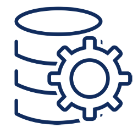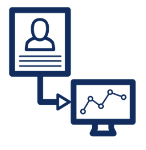It feels like just yesterday I was arriving to Agencyport headquarters in Boston’s Seaport District for my first ever summer internship. Who would have thought that nearly ten years later I would bump into my then bosses Allan Egbert and Michael Albert at the Dig.In conference in Austin. As it turned out, Allan and Michael never left the insurance industry and were a few years into their next project, Ask Kodiak.
Shortly after Agencyport was acquired by Duck Creek Technologies in 2015, Allan and Michael went on to start Ask Kodiak to help agents and carriers collaborate and communicate in a digital world.
This means: Total user control, including the ability to turn on/off or prioritize appetite on-demand. Great UI/UX. Simplified sign-up and sign-on. Full-featured APIs. No pesky sales people. No hidden consulting projects for your budget dollars to suddenly fund. And… all with a clear ROI: Ask Kodiak helps carriers and agents write more of the risks they want to write, faster.
No wonder they’re doing so well.
Allan was kind enough to let an old intern (me) interview him, so without further ado…
To level set with everyone reading this, in your own words, what does Ask Kodiak do?
Ask Kodiak is a commercial insurance appetite and eligibility engine. Our mission is to provide the insurance market a single source of truth for carrier appetite and eligibility – managed by the insurers themselves – that can be used across channels.
Do you mind explaining a little more about your background, your role at Ask Kodiak, and what prompted the initial idea for Ask Kodiak?
My background is in software engineering, and the business card says Co-Founder at Ask Kodiak. That means I do everything from write code to picking up the snacks at Costco.
The founding team has always focused on looking at existing obstacles that could benefit from engineering efficiency. Small problems, left unaddressed, is the most fertile ground, particularly in insurance. And obviously, this is where the seeds of Ask Kodiak were planted.
What about your previous experience do you think contributed to the success you guys are seeing today?
The previous experience of the team forged an understanding that working in insurance technology takes patience. You have to prove your product does what you say it does. It’s a reality that can be frustrating for new entrants into insurance.
There are no easy customer wins.
What are the main problems Ask Kodiak is solving? Is Ask Kodiak using AI/ML to address any of these problems?
Ask Kodiak optimizes the dials around product selection, the quality and quantity of agent sourced deal flow will improve. Further downstream, underwriting effort should decrease as well.
I consider AI and ML to be tools. So the answer is yes, but users are more interested in Ask Kodiak features providing value around insurance product selection. That headline of Ask Kodiak being useful is more important to me.
Who would you say are some of your biggest competitors and what separates Ask Kodiak apart from them?
Ask Kodiak is unique because we genuinely start from an API first approach, which means, you can go online, sign-up with Kodiak, request API access, look at the doc online, and start building apps immediately.
If you are an API company, this is where the bar is.
Lastly, and this is also a fundamental difference, we are open to working with anyone, particularly if we have shared customers. Our partnership program is pretty simple. If you want to try our API, email us, and we will turn it on for you.
We’ve written a lot recently on build vs. buy, InsurTech disruption, partnerships/ecosystems, etc. — would you say you are complimentary to existing players? Disruptive? How do you view Ask Kodiak fitting into the larger picture?
Ask Kodiak optimizes the first couple of steps of the insurance purchasing experiences or the insurance product selection. The features become complementary for marketing, sales, and operational activities on the insurance purchasing value chain.
And I will repeat what I said earlier: if you want to try our API, email us.
To quote your website: “Ask Kodiak is in the business of helping agents and carriers collaborate and communicate in the digital world, not ‘disrupting insurance’ like the new guys or relaying AL3 to 1980’s era mailboxes like the legacy vendors you know all too well. You can expect more from us.” Do you mind briefly speaking to that?
Disruption is a great word to raise money and get a cheap marketing pop, so the marketing copy on our website is polite.
In 2020, true SaaS companies should be able to deploy features at any time of day. Your users show up and it’s like finding presents under the tree.
That’s the expectation of any piece of software anyone uses today.
You’ve been in the insurance space for quite some time – would you say there is truly 0 to 1 disruption happening or do you think companies are just adding better technology on top of systems that have been around for years?
A couple of observations: I think the market is getting fatigued by companies (self) declaring they are disruptive. That funding events are huge victories of market acceptance or validation—just my opinion.
Don’t underestimate the power of merely doing for your customers (policyholders, agents, insurers) what you say you are going to do. Nail that, and you will be ahead of most of your peers.
Is technology better to create new offerings? No question. Are customers happier with insurance technology providers? I think we are in the same place we were 15 years ago.
What are you most excited about right now in the space – could be something Ask Kodiak is doing or something else entirely?
Opportunity.
Finally, what advice would you give aspiring InsurTech companies?
Insurance is the long game.
____________________________
And there you have it! If you have any questions about Ask Kodiak, feel free to reach out and I’ll put you in touch with Allan. Otherwise, head over to their website and check it out for yourself!
Written by Woody Klemmer
About: ForMotiv is a behavioral intelligence platform that helps leading financial service, insurance, and on-demand companies measure user’s digital body language to predict outcomes such as risk and fraud.





